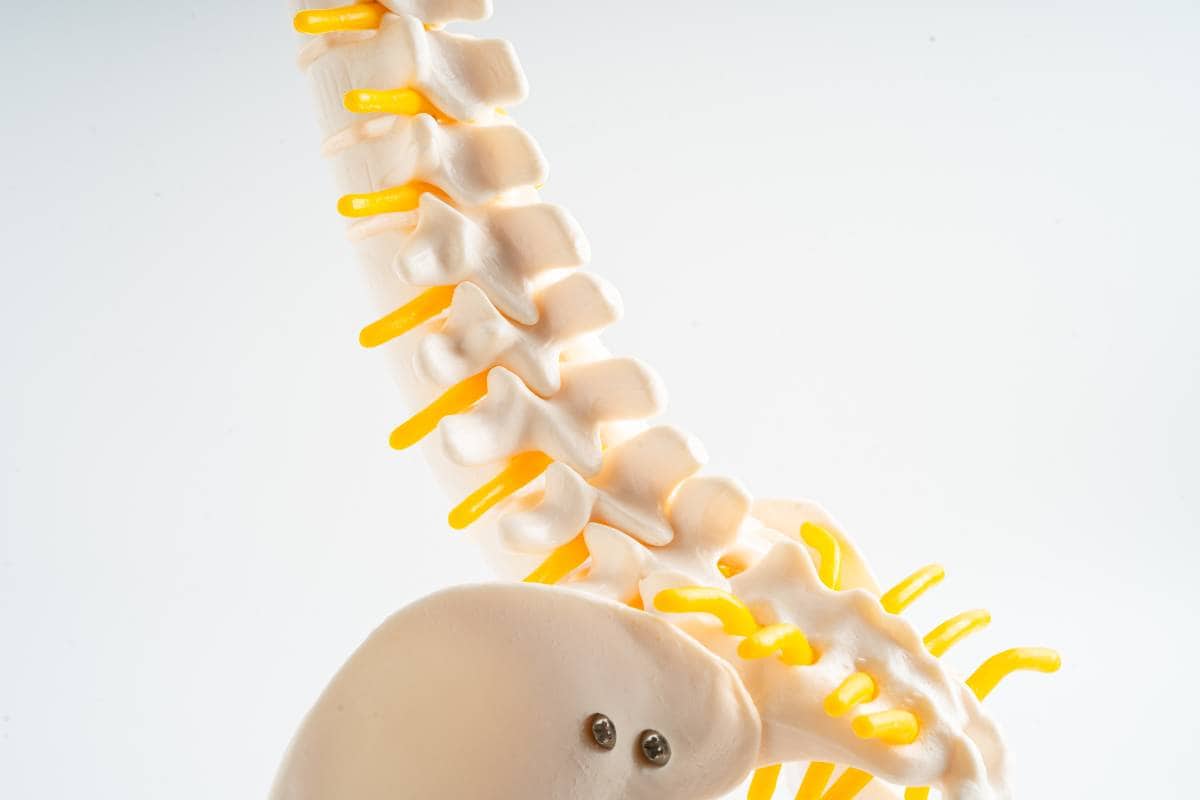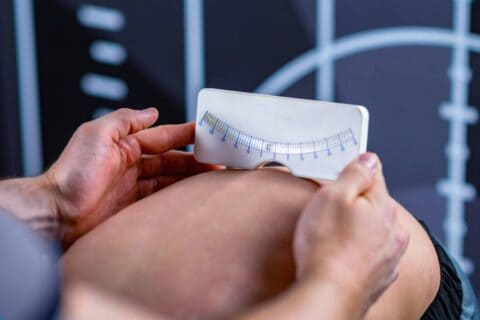Spine health is a crucial aspect of our overall well-being, yet it’s often overlooked until problems arise. Did you know that around 35% of people suffer from degenerative disc disease? This condition can significantly impact daily life, affecting everything from mobility to comfort. Understanding the stages of this disease is key to managing it effectively. Let’s explore how degenerative disc disease progresses in both the neck and lower back, and discuss ways to maintain spine health at any age. Whether you’re dealing with early symptoms or seeking preventive care, there’s always room for improvement in spine health.
Key Takeaways
- Spine degeneration is a natural process that can affect both the cervical and lumbar regions, progressing through distinct stages
- Understanding the stages of spine degeneration is crucial for early intervention and effective management of symptoms
- A combination of conservative treatments, lifestyle modifications, and advanced medical interventions can help manage spine degeneration and improve quality of life
Table of Contents
- Understanding Spine Anatomy
- Common Causes of Spine Degeneration
- Stages of Cervical Spine Degeneration
- Stages of Lumbar Spine Degeneration
- Symptoms and Diagnosis
- Impact on Daily Life and Mental Health
- Treatment Options
- Emerging Treatments and Technologies
- Economic Impact of Spine Degeneration
- FAQs
- Conclusion
Understanding Spine Anatomy
Imagine your spine as the backbone of a skyscraper. Over time, even the mightiest structures can show signs of wear and tear. That’s essentially what spine degeneration is all about. It’s a natural process that affects both the cervical spine (neck region) and lumbar spine (lower back).
As a chiropractor who’s seen several spines, I can’t stress enough how important it is to understand this process. It’s like knowing the plot twists in a movie before they happen – you’re better prepared to handle what comes next.
Let’s break down the anatomy of our spine, shall we?
Think of your spine as a flexible tower made up of building blocks called vertebrae.
Cervical spine structure: This is the neck portion of your spine, consisting of seven vertebrae1. It’s like the VIP section of your spine, supporting your head and allowing free range of motion in all directions. We start to see the loss of curvature within this section due to head constantly shifted forward.
Lumbar spine structure: The lower back region, is made up of five larger vertebrae2. This is the workhorse of your spine, bearing most of your body weight. It’s the reason you can bend over to tie your shoelaces (or at least attempt to). If pain becomes overly acute it may recruit your S.I joints.
Intervertebral discs: These are the unsung heroes of your spine3. Imagine them as tiny, jelly-filled doughnuts between each vertebra, acting as shock absorbers. They’re the reason you don’t feel like a human jackhammer every time you walk.
Is SpineMed Your Path to a Pain-Free Life?
Tired of living with back pain? Take our quick quiz to see if you’re a candidate for the breakthrough SpineMed Treatment. It only takes a few minutes to potentially change your life.
Common Causes of Spine Degeneration
Now, why does our spine decide to throw in the towel? There are several culprits:
- Natural aging process: Just like your favorite pair of jeans, your spine wears out over time. It’s the price we pay for being bipedal.
- Lifestyle factors: Couch potatoes, heavy lifters, and desk jockeys – I’m looking at you. Poor posture, lack of exercise, and repetitive stress can accelerate degeneration. Life needs balance.
- Genetic predisposition: Sometimes, it’s in your DNA. It is what it is.
- Injuries and trauma: Yeah, your spine remembers every heavy thing you lifted. This category can really mess with your psyche over the long run.
Stages of Cervical Spine Degeneration
Stage 1: Dysfunction
Imagine your spine as a well-oiled machine. In this first stage, that machine starts to show some wear, but it’s not making noise yet. The discs between your vertebrae, those crucial shock absorbers, begin to lose their spunk. They might flatten a bit or bulge slightly, but you probably won’t feel a thing.
The tricky part? Your spine’s natural curves might start to shift ever so slightly. It’s like when your car’s alignment is just a touch off – you might not notice at first, but over time, it can lead to bigger issues. This stage is sneaky because there’s usually no pain, making it hard to catch without regular check-ups. Come get treated in this stage! You are going to save yourself so much cost in the long run when it comes to time and money.
Stage 2: Instability
As we move into stage two, those spinal discs start to feel a bit parched. They lose some of their water content, becoming less squishy and more like deflated water balloons. This is when you might start to feel some discomfort.
You could experience mild, occasional back pain. Some folks notice they’re not as flexible as they used to be, or they might feel a bit stiffer in the mornings. The spine’s curve might become more noticeable, and you might even lose a smidge of height. It’s like your spine is trying to send you subtle hints that it needs some care.
Stage 3: Stabilization
Don’t let the name fool you – this isn’t necessarily a good thing. Your spine attempts to stabilize itself by forming bone spurs. These are like little bony speed bumps that your body creates in an attempt to shore things up.
In this stage, your body gets creative. It realizes something’s off and tries to fix it, but its solution isn’t ideal. Bone spurs might start to form – little bony growths that are your body’s attempt to stabilize the spine. It’s like your spine is trying to grow its own support beams.
Pain becomes more consistent at this point. You might find it harder to bend, twist, or stand for long periods. Some people experience numbness or tingling in their arms or legs if these bone spurs press on nerves. It’s crucial to seek help at this stage because the changes are becoming more significant. We definitely don’t want spurs because we can’t get rid of them!
Stage 4: Advanced Degeneration
At this stage, the changes in your spine are more pronounced. You’re likely experiencing chronic pain, and your mobility might be significantly reduced. It’s like your spine has decided to retire early, but forgot to tell the rest of your body.
The discs between your vertebrae are seriously worn down at this point, which means your bones might be grinding against each other like a pepper mill. Ouch! This can lead to inflammation and potentially lasting chronic nerve compression. It’s not a fun stage, which is why early intervention in the earlier stages is so crucial.
Stages of Lumbar Spine Degeneration
Now, let’s shift our focus southward to the lumbar spine. The stages here are very mirrored to the cervical but with their own unique flair.
Stage 1: Disc Dehydration
Imagine your spinal discs are like water balloons. In this stage, those balloons are starting to lose water. They’re not popped, but they’re definitely not as plump and cushiony as they used to be. You might not feel much different at this stage, but your spine is quietly grumbling to itself.
Stage 2: Disc Bulging
As we move into stage two, those water balloons we talked about? They’re starting to bulge in weird places. It’s like squeezing a stress ball – the pressure has to go somewhere. This bulging can start to irritate nearby nerves or the spinal cord itself, which might lead to some discomfort or pain.
Stage 3: Disc Herniation
Uh-oh, we’ve got a situation. In this stage, the outer layer of the disc cracks (annular fissures), allowing the inner material to escape. It’s like squeezing a jelly donut too hard – the filling’s got to go somewhere! This can put pressure on your nerves, leading to pain, numbness, or weakness in your legs.
Stage 4: Facet Disease and Spinal Stenosis
The facet joints, which allow for spine flexibility, start to wear out like old brake pads. At the same time, the spinal canal can narrow (that’s the stenosis part), potentially squeezing the nerves inside. It’s like your spine is trying to hug your nerves, but it’s really more of an uncomfortable squeeze.
It’s worth noting that spine degeneration varies significantly from person to person. Some individuals may progress through these stages rapidly, while others might remain at one stage for extended periods. The key is to stay attuned to your body’s signals and seek professional help when needed.
Remember, your spine is unique, and so is your path to maintaining its well-being.

Symptoms and Diagnosis
How do you know if you’re on this degenerative journey? Here are some tell-tale signs:
For cervical degeneration:
- Neck stiffness
- Headaches
- Reduced range of motion
For lumbar degeneration:
- Lower back deep ache
- Sciatica
- Difficulty bending or twisting
Diagnosis typically involves a combination of physical examination and imaging techniques like X-rays, MRIs, or CT scans.
Impact on Daily Life and Mental Health
Living with spine degeneration isn’t just about physical pain. It can affect every aspect of your life, from tying your shoes to your mood.
Physical limitations can make everyday tasks challenging. Simple things like picking up your child or reaching for a high shelf can become Herculean efforts.
The psychological effects of chronic pain4 shouldn’t be underestimated either. It’s not uncommon to experience feelings of frustration, anxiety, or even depression especially when you are losing work days.
But don’t lose hope! There are strategies to maintain your quality of life:
- Stay active within your limits
- Consult with a sports medicine based Chiropractor
- Practice stress-reduction techniques like meditation
- Seek support from friends, family, or support groups
Treatment Options
Before we start talking about surgical options, let’s explore some gentler approaches that can work wonders for your spine. After all, why use a sledgehammer when a feather duster might do the trick?
- Chiropractic Care: Chiropractic care can be like a spa day for your spine and it’s no in and out wham bam see yah later. Treatments involve 30 minutes of various manual techniques to align your spine, myofascial releasing, possible traction, and guided exercises.
- SpineMed Protocol: Now, let me introduce you to the star of our show – the SpineMed Protocol. This non-surgical spinal decompression treatment is like a gentle stretch for your spine. How does it help, you ask? Well, it creates negative pressure in the disc, which can help retract bulging discs and promote healing.
- Pain Management Techniques: This could include everything from over-the-counter pain relievers to more advanced options like epidural steroid injections. It’s about finding the right tool in your pain management toolbox. When pain is real bad I have had patients’ do steroid injections with decompression although we do prefer Class IV Laser compared to injections.
- Lifestyle Modifications: Sometimes, small changes can make a big difference. This might include:
- Improving your posture (Your mom was right all along!)
- Using ergonomic furniture
- Maintaining a healthy weight (Less weight = happy spine)
- Quitting smoking (This adds to disc dehydration)
- Get regular check-ups with your neighborhood chiropractor
The goal of these treatments is to avoid surgery if possible. And with approaches like the SpineMed Protocol, we’re using cutting-edge technology to give your spine the TLC it deserves. So before you start googling “spine surgeons near me,” give these options a try.
Emerging Treatments and Technologies
As a practicing chiropractor, I’m continually amazed by the advancements in spine care. One treatment that has been particularly effective for many of my patients is SpineMED.
This is a non-surgical, drug-free procedure that offers relief for patients suffering from discogenic pain. As I mentioned earlier, this innovative treatment is particularly beneficial for three common spinal conditions:
- Bulging Discs: It can help decompress the spine, potentially allowing bulging disc material to be reabsorbed.
- Herniated Discs: The treatment can create negative pressure within the disc, which may help retract herniated material.
- Degenerative Disc Disease: By promoting fluid and nutrient exchange in the discs, It may help slow the degenerative process and alleviate associated symptoms.
The non-invasive nature of this treatment is one of its most significant advantages. It utilizes precise and computer-controlled tension to decompress the spine, potentially relieving pressure on nerves and promoting disc healing. This approach can be particularly appealing to patients who wish to avoid surgery or are not good candidates for more invasive procedures.

Economic Impact of Spine Degeneration
Spine degeneration isn’t just a pain in the neck (or back) – it can also be a pain in the wallet. The costs associated with treatment, lost productivity, and work absenteeism can add up quickly.
But here’s the silver lining: early intervention and proper management can significantly reduce these costs in the long run.
Is SpineMed Your Path to a Pain-Free Life?
Tired of living with back pain? Take our quick quiz to see if you’re a candidate for the breakthrough SpineMed Treatment. It only takes a few minutes to potentially change your life.
FAQs
How can a chiropractor help with spine degeneration?
At what stage of spine degeneration should I consider seeing a chiropractor?
How does the SpineMED treatment work for degenerative disc disease?
Can chiropractic care and treatments like SpineMED help avoid the need for surgery?
How often should I receive chiropractic treatments for spine degeneration?
Conclusion
Spine degeneration can be a challenging journey, but it doesn’t have to define life. Understanding the stages and available treatments empowers making informed decisions about spinal health. From conservative approaches like chiropractic care and innovative therapies like SpineMED to lifestyle modifications, many options exist to manage symptoms and improve quality of life.
Every spine tells a unique story, and personalizing care is crucial.
While the path may seem daunting, remember that support and effective treatments are available. Taking the first step towards better spine health can lead to significant improvements.
Why not explore the possibilities? Schedule a consultation to discuss concerns and create a tailored plan for a healthier, happier spine.
- https://www.ncbi.nlm.nih.gov/books/NBK539734/#:~:text=The%20cervical%20spine%20comprises%207,CCJ)%20together%20with%20the%20occiput. ↩︎
- https://my.clevelandclinic.org/health/articles/22396-lumbar-spine#:~:text=Your%20lumbar%20spine%20consists%20of%20the%20five%20bones%20(vertebra)%20in,your%20triangular%2Dshaped%20sacrum%20bone. ↩︎
- https://pubmed.ncbi.nlm.nih.gov/29262063/ ↩︎
- https://www.ncbi.nlm.nih.gov/pmc/articles/PMC8975232/ ↩︎
Blog Disclaimer: The information provided on The BodyFix Chiro blog is for general informational and educational purposes only and is not intended as medical advice. These articles reflect our opinions and experiences but should not be used to diagnose or treat any health conditions. Always consult with your physician, chiropractor, or other qualified healthcare provider before starting any new treatment, exercise program, or making changes to your health routine. Any actions you take based on information from this blog are entirely at your own risk, and The BodyFix Chiro and its contributors disclaim any liability for the decisions you make based on this information.




